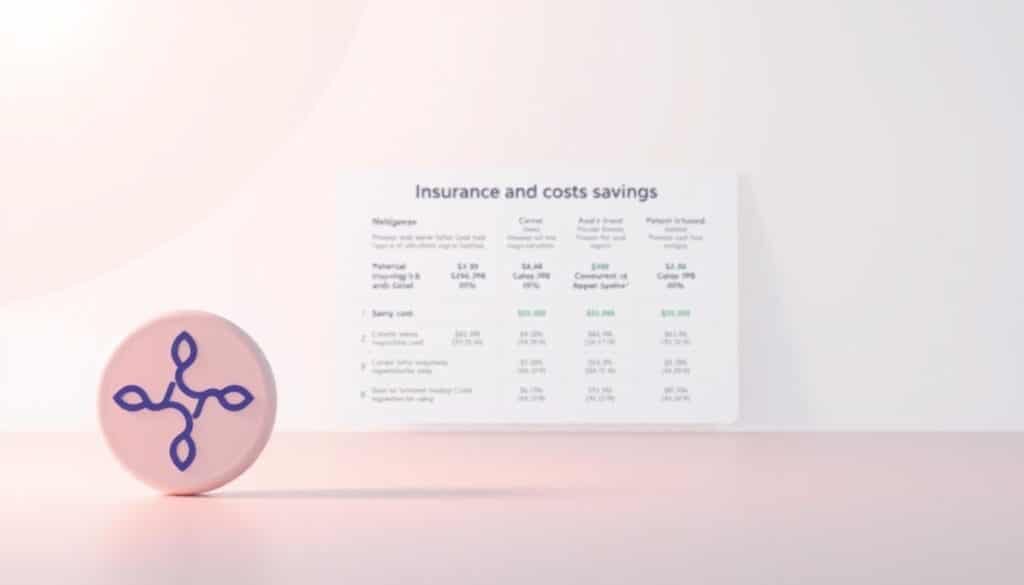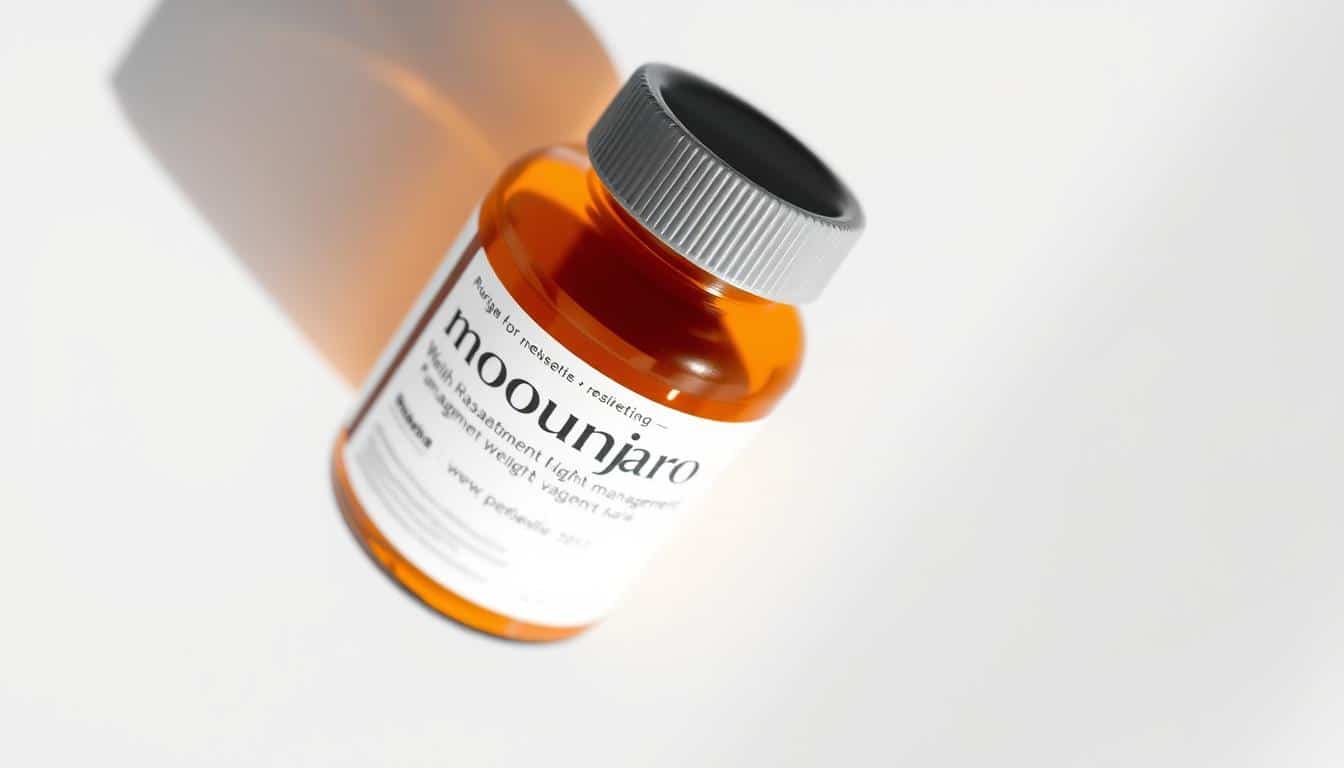This guide explains safe, legal pathways to access Mounjaro for non-diabetes purposes. Though FDA-approved for type 2 diabetes management, this medication has gained attention for its off-label benefits in weight management. You’ll learn actionable steps to navigate prescription requirements while prioritizing health and compliance.
Originally designed to regulate blood sugar, Mounjaro’s secondary effects on appetite suppression have sparked interest. Clinical studies and patient reports suggest it may aid sustainable weight loss when combined with lifestyle changes. However, securing it requires careful planning and professional guidance.
We’ll walk through evaluating eligibility, consulting licensed providers, and exploring insurance coverage. You’ll discover how to discuss off-label use with your doctor and verify whether this treatment aligns with your health profile. Every step emphasizes safety and adherence to medical protocols.
Your journey starts with understanding the medication’s mechanisms and risks. From there, we’ll address common challenges like prior authorization processes and cost considerations. All recommendations are grounded in medically reviewed research from trusted institutions like the NIH and FDA.
Introduction to Mounjaro and Its Applications
Mounjaro is an injectable medication approved by the FDA to manage type 2 diabetes. It works by targeting two key hormones: GLP-1 and GIP. These hormones help regulate blood sugar by slowing digestion and improving insulin sensitivity. For those with diabetes, this dual-action approach stabilizes blood sugar levels more effectively than single-hormone therapies.
Beyond its primary use, Mounjaro influences appetite signals in the brain. Clinical trials show it can reduce hunger and promote feelings of fullness. This secondary effect has made it a topic of interest for weight management, though this application remains off-label. Always consult your doctor before considering non-FDA-approved uses.
The medication’s ability to regulate blood sugar stems from its mimicry of natural hormones. GLP-1 enhances insulin release after meals, while GIP supports fat metabolism. Together, they create a synergistic effect that addresses both metabolic health and body composition.
Current research highlights its potential beyond diabetes care. Studies suggest it may help individuals achieve significant weight loss when paired with lifestyle adjustments. However, insurance coverage often depends on a type diabetes diagnosis, which we’ll explore in later sections.
Understanding How to get Mounjaro without diabetes
Recent trends show a shift toward using GLP-1 medications for combating obesity effectively. While originally developed for blood sugar control, these drugs now help individuals achieve significant weight loss when traditional methods fall short. Off-label prescriptions require thorough medical evaluation and documented evidence of prior lifestyle efforts.
Healthcare providers increasingly consider obesity a chronic condition needing multifaceted treatment. Medications like Mounjaro work by targeting appetite signals and slowing digestion. This dual action supports sustainable results when combined with nutritional changes and physical activity.
Insurance approval often depends on demonstrating unsuccessful attempts at diet modification and exercise. Providers typically review BMI metrics and obesity-related health risks before prescribing. Always discuss potential side effects, including nausea or gastrointestinal issues, with your doctor.
While other medications exist, Mounjaro’s unique hormone-targeting mechanism sets it apart. Research indicates it may promote greater weight loss compared to single-action alternatives. However, individual responses vary, requiring personalized monitoring and dosage adjustments.
Understanding these factors helps you make informed decisions about obesity management. Partner with healthcare professionals to assess whether this approach aligns with your health history and goals. Safety remains paramount when exploring off-label applications.
Evaluating Your Eligibility and Health Criteria
Determining eligibility for this treatment involves careful analysis of your physical metrics and medical background. Providers follow strict protocols to ensure patient safety and treatment effectiveness.
Assessing BMI and Weight-Related Metrics
Healthcare teams prioritize body mass index (BMI) when evaluating candidates. Adults with a BMI of 30+ typically qualify, while those at 27+ may be considered if they have weight-related health conditions like hypertension. These thresholds align with guidelines from leading medical associations.
Reviewing Health History and Risks
Your complete medical history becomes crucial during the assessment. Providers screen for thyroid tumors, pancreatitis, or kidney issues that could pose risks. Recent bloodwork and organ function tests often supplement this evaluation.
Disclosing all prescription medications and supplements helps identify potential interactions. Those with a family history of endocrine disorders may require additional testing before approval. This thorough approach ensures the treatment aligns with your unique health profile.
Clinicians use standardized checklists to verify readiness, focusing on metabolic markers and lifestyle factors. Transparent communication about your body’s responses to previous weight management efforts strengthens the evaluation process.
Consulting with Your Healthcare Provider
Initiating a conversation with your healthcare provider is the critical first step in exploring this treatment option. Licensed professionals assess your unique situation through detailed discussions and clinical evaluations. This ensures alignment between your goals and safe medical practices.
Discussing Medical History and Weight Loss Goals
Prepare to share your complete medical background during the consultation. Providers review chronic conditions, allergies, and current medications to identify potential risks. Be specific about your weight management journey—previous strategies, results, and challenges faced.
Clear objectives help shape realistic expectations. Whether targeting a 10% body weight reduction or improving metabolic markers, articulate these aims openly. Your healthcare provider may suggest complementary lifestyle modifications to enhance outcomes.
Understanding the Prescription Evaluation Process
Clinicians follow structured protocols when considering off-label applications. They’ll ask targeted questions about cardiovascular health, endocrine function, and mental wellness. This thorough approach minimizes adverse reactions while maximizing therapeutic potential.
Authorization depends on demonstrating medical necessity through lab results and health metrics. If approved, your healthcare provider will outline dosage guidelines and monitoring schedules. Regular follow-ups allow adjustments based on your body’s response.
Transparency strengthens this partnership. Disclose all supplements, over-the-counter drugs, and historical reactions to medications. This candor helps providers determine if prescribing Mounjaro aligns with your safety profile and long-term wellness vision.
Navigating the Prescription Process
Securing your prescription marks a pivotal step toward treatment access. Modern healthcare systems offer multiple pathways to obtain medications safely. Understanding these options helps you choose the most efficient method for your needs.
Traditional Pharmacy Visits
In-person pharmacies remain a reliable choice for many patients. Your provider sends the prescription electronically or via paper copy. Staff verify details like dosage and refill limits before dispensing. This method allows face-to-face consultations with pharmacists about storage or side effects.
Digital Prescription Services
Telehealth platforms streamline medication access through virtual care networks. Licensed pharmacies linked to these services validate prescriptions digitally. Many offer automatic refills and home delivery—ideal for those with tight schedules or limited mobility.
Both methods require identity verification and insurance checks. Healthcare laws mandate these steps to prevent misuse. Digital platforms often provide cost comparison tools, while local pharmacies might stock discount programs.
Telehealth can accelerate timelines for urgent needs. However, some insurers prefer in-network brick-and-mortar locations. Confirm coverage details beforehand to avoid surprises. Whether online or offline, licensed providers ensure medications regulate blood sugar safely under medical supervision.
Understanding Insurance and Cost Savings Options
Navigating insurance coverage for medications can feel overwhelming. Many plans exclude off-label prescriptions, requiring creative solutions to manage expenses. Third-party programs and strategic pharmacy choices often bridge this gap effectively.

Exploring Manufacturer and Savings Card Programs
Pharmaceutical companies frequently offer discount cards to reduce out-of-pocket costs. These programs can slash prices by up to $500 monthly for eligible patients. Check the manufacturer’s website for current offers and enrollment requirements.
Savings cards work best when insurance denies coverage. Present them at pharmacies during checkout alongside your prescription. Some require annual renewal or proof of income—keep documentation handy.
Comparing In-Store and Online Pharmacy Pricing
Digital pharmacies sometimes provide deeper discounts than brick-and-mortar locations. Compare prices using tools like GoodRx or Blink Health before filling your script. Online platforms may offer coupons or bulk purchase options.
Local pharmacies counter with loyalty programs and personalized service. Ask about price-match policies if you find lower rates elsewhere. Always verify licensing for online sellers to avoid counterfeit products.
Contact your insurer directly to explore diabetes obesity coverage exceptions. Some plans approve claims if you meet specific BMI thresholds or have related health risks. Document all communication for future appeals.
Reviewing Potential Side Effects and Safety Considerations
Every medication carries risks that require careful evaluation. Clinical studies show Mounjaro users commonly experience mild to moderate side effects. Gastrointestinal issues like nausea and constipation affect 12-30% of patients, often diminishing within weeks as the body adjusts.
More serious effects involve potential thyroid complications. Animal research indicates increased risk of thyroid C-cell tumors, though human relevance remains unconfirmed. Report any throat lumps, hoarseness, or difficulty swallowing immediately to your provider.
Regular monitoring helps catch adverse reactions early. Track symptoms like persistent abdominal pain or rapid heart rate. Blood tests may be needed to assess thyroid function and pancreatic enzymes during treatment.
If side effects disrupt daily life, contact your healthcare team promptly. Dosage adjustments or alternative therapies might be necessary. Never discontinue medication abruptly without medical guidance.
Safety protocols emphasize ongoing communication with your provider. They’ll balance therapeutic benefits against individual risk factors. With proper oversight, most effects remain manageable while pursuing health goals.
Integrating Lifestyle Changes for Effective Weight Management
Sustainable results emerge when medication aligns with daily habits. Research confirms combining treatment with lifestyle adjustments amplifies weight management success. Small, consistent changes create lasting impact while supporting your body’s natural rhythms.

Adopting a Nutrient-Rich Diet
Focus on colorful plates filled with vegetables, fruits, and lean proteins. Whole grains like quinoa and brown rice provide lasting energy. These choices stabilize blood sugar—critical when managing weight alongside treatment.
Track your food intake using apps or journals. Notice patterns that lead to overeating. Swap processed snacks for nuts or Greek yogurt to curb cravings naturally.
Establishing an Exercise Routine
Movement accelerates progress by building muscle and boosting metabolism. Aim for 150 weekly minutes of brisk walking or cycling. Add strength training twice weekly to preserve lean mass during weight loss.
Consistency matters more than intensity. Short daily walks outperform sporadic gym sessions. Pair activity with hydration to optimize performance and recovery.
Gradual adjustments prevent burnout. Celebrate non-scale victories like improved stamina or better sleep. These sustainable habits protect against weight gain while enhancing overall wellness.
Considering Alternative Medications and Weight Loss Strategies
Different GLP-1 medications cater to varying health needs and goals. While some focus solely on blood sugar control, others target appetite regulation more aggressively. Exploring these options ensures you find the best match for your body’s unique responses.
Key Differences Between Hormone-Targeting Treatments
Ozempic shares Mounjaro’s GLP-1 targeting but lacks dual hormone action. This makes it slightly less effective for weight loss in clinical trials—patients averaged 12-15% body weight reduction versus 15-22% with Mounjaro. However, its longer track record offers extensive safety data.
Wegovy, approved specifically for obesity, uses higher semaglutide doses than Ozempic. It may suit those needing stronger appetite suppression. Both require weekly injections, but Wegovy’s FDA approval for weight management simplifies insurance approval in many cases.
Saxenda (liraglutide) serves as a daily-injection alternative. Though less potent, its flexible dosing helps those sensitive to gastrointestinal side effects. Each medication has trade-offs in efficacy, convenience, and cost.
Your health profile determines which option fits best. Those with cardiovascular risks might prioritize Ozempic’s heart benefits. Individuals focused purely on weight loss could lean toward Wegovy. Always discuss these nuances during your consultation.
Combining medications with behavioral changes often yields optimal results. Pairing GLP-1 therapies with mindful eating or stress management techniques addresses multiple hormone pathways simultaneously. Your care team can craft a layered approach that evolves with your progress.
Monitoring Your Progress and Adjusting Treatment Over Time
Effective health management requires ongoing attention to how your body responds. Tracking key metrics helps identify trends and potential issues early. This proactive approach ensures your treatment remains aligned with your evolving needs.
Tracking Physiological Changes
Regularly measuring blood sugar levels provides insights into metabolic shifts. Digital apps like MyFitnessPal or GlucoseTracker simplify logging daily readings. Pair this data with weekly weigh-ins to spot patterns.
Schedule monthly checkups to review progress with your healthcare provider. They’ll analyze trends in sugar levels and body composition. Sudden drops or plateaus might signal the need for dosage adjustments.
Blood work and A1C tests offer deeper insights into long-term stability. Share these results promptly with your medical team. Transparent communication helps them tailor your plan for optimal safety and effectiveness.
Treatment plans aren’t static—expect refinements as your body adapts. Your provider may modify injection frequency or suggest dietary tweaks based on blood markers. Staying engaged in this process supports sustainable outcomes.
Proactive management turns data into actionable steps. Celebrate milestones while remaining vigilant about sugar regulation and weight trends. This balanced approach keeps health risks minimized and progress on track.
Conclusion
Achieving your health goals requires a strategic approach combining medical support and personal commitment. Evaluating eligibility starts with understanding your body’s needs through BMI assessments and health history reviews. Partnering with licensed providers ensures your treatment aligns with safety standards and regulatory requirements.
Navigating prescriptions demands careful coordination between healthcare teams and pharmacies. Regular monitoring helps track progress while allowing timely adjustments to your management plan. Remember, sustainable results thrive when medication works alongside nutritional balance and physical activity.
This journey underscores the value of professional guidance at every phase. Open communication with your provider builds a foundation for informed decisions and minimized risks. Weight management remains a collaborative effort—one that prioritizes long-term wellness over quick fixes.
Take charge by scheduling a consultation to explore options tailored to your unique profile. With the right support system, you can move forward confidently toward healthier outcomes.
FAQ
Can Mounjaro be prescribed for weight loss without a diabetes diagnosis?
Yes. Healthcare providers may prescribe Mounjaro off-label for chronic weight management if you meet criteria like a BMI ≥30 or ≥27 with obesity-related conditions. A thorough evaluation of your health history and goals is required.
What BMI is required to qualify for Mounjaro for weight management?
A BMI of 30 or higher qualifies for obesity treatment. If your BMI is 27–29.9, you may still qualify if you have conditions like hypertension, high cholesterol, or sleep apnea. Providers use these metrics to assess eligibility.
Are there health conditions that disqualify someone from using Mounjaro?
Yes. A personal or family history of medullary thyroid cancer or multiple endocrine neoplasia syndrome (MEN 2) prohibits its use. Pancreatitis, kidney issues, or severe gastrointestinal disorders may also limit eligibility.
How should I discuss off-label use with my healthcare provider?
Share your weight loss goals, past strategies, and medical history. Highlight how obesity impacts your health. Providers will review risks, benefits, and whether Mounjaro aligns with your treatment plan.
Can telehealth providers prescribe Mounjaro for non-diabetes purposes?
Yes. Many telehealth platforms offer consultations for weight management. Ensure the provider reviews your medical records and conducts a thorough evaluation before prescribing.
Are there cost-saving options if insurance doesn’t cover Mounjaro?
Eli Lilly’s savings card may reduce costs for eligible patients. Compare prices at pharmacies like CVS, Walgreens, or online platforms. Some compounding pharmacies offer alternatives, but verify their safety and legitimacy.
What are common side effects when using Mounjaro for weight loss?
Nausea, diarrhea, and constipation are frequent. Severe side effects like pancreatitis or low blood sugar are rare. Report persistent symptoms to your provider immediately.
How do lifestyle changes impact Mounjaro’s effectiveness?
Combining Mounjaro with a balanced diet and regular exercise enhances results. Focus on protein-rich meals, fiber, and hydration. Aim for 150+ minutes of weekly aerobic activity for sustained weight loss.
What alternatives exist if Mounjaro isn’t suitable?
Other GLP-1 medications like Wegovy or Zepbound are FDA-approved for weight loss. Non-GLP-1 options include phentermine or Contrave. Discuss alternatives with your provider based on your health profile.
How often should progress be monitored during treatment?
Track weight, blood sugar, and side effects monthly. Providers may adjust dosages or suggest dietary tweaks based on your response. Regular check-ins ensure safety and long-term success.


